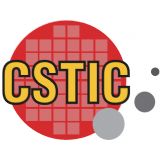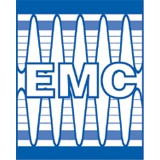|
CICC talk: Graphene could succeed CMOS
9/21/2011 |
|
|
Rick Merritt
CMOS semiconductor technology could run out of gas at about 7 nm in 2024, and graphene is the leading candidate to replace it, according to a keynote address to be delivered at next week's Custom Integrated Circuits Conference (CICC) here.
"Graphene has shown a lot of promise to eventually replace silicon microchips, but in my opinion we won't see it in use until after silicon reaches its limits early in the next decade," said James D. Meindl, professor of electrical and computer engineering at Georgia Institute of Technology and founding director of its Nanotechnology Research Center that has been studying graphene for five years.
By 2024, silicon MOSFETs will hit walls in how short engineers can make a channel and gate and how thin a gate insulator they can support, Meindl said, citing projections of the International Technology Road Map for Semiconductors.
Graphene faces plenty of challenges before it can become a successor to CMOS. "We have to make multiple billons of transistors in a sheet of graphene, but we've made less than a handful of transistors so far," said Meindl.
The new material was discovered by researchers at the University of Manchester in 2004 in work that won a Nobel Prize for finding a way to create a single layer of carbon atoms. "No one thought you could do that, but now that is just the starting bell for what can be done with a single layer of carbon atoms in perfectly ordered hexagonal cells," he said.
To date, researchers have uncovered at least two techniques for making graphene. They have also created some "rather crude" working transistors in the material.
The graphene transistors have better electrical and thermal conductivity and current carrying capabilities than copper interconnects. They also are very attractive as a way to make MEMs, Meindl said.
"The most impressive graphene transistors described to date have been RF transistors," such as an amplifier for a 500 GHz analog signal, said Meindl. "Graphene switches are more challenging to make for many reasons including their leakage current," he added.
Meidl's lab is working on ways to make 15nm wide ribbons of grapheme that could be building blocks for graphene switches that are as fast and power efficient as silicon. The chief challenge is making the ribbons without damage at the edges that degrades the positive characteristics of the material.
So far nearly 700 researchers from nearly every department in the Georgia Tech college of engineering have visited Meindl's lab to explore graphene. "The interest in our technology is as broad as engineering and virtually as broad as physical science," he said.
The CICC program includes a broad range of papers covering topics ranging from wired, wirelsss and optical communications to clocks. PLLs, ADCs and power components. Special sessions will address 3-D chip stacking and biomedical technologies. |
|
|
|
|
|




